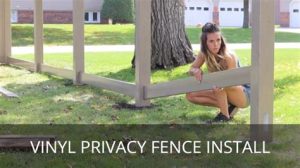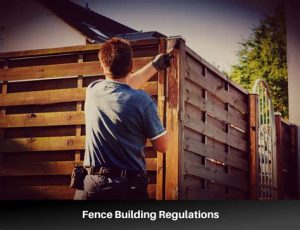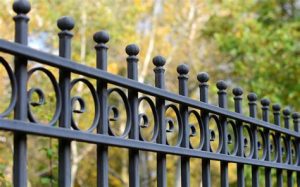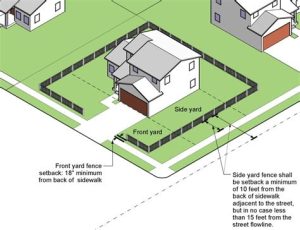Learn how to install fences on rainy days, identify risks, tackle wet soil challenges, and ensure proper drainage for long-term stability.Installing a fence can be an exciting home improvement project, but when rainy weather rolls in, it can complicate matters significantly. While some might think that a little rain won’t hurt, it’s essential to consider the potential risks associated with fence installation on a wet day. From issues with soil stability to challenges in setting posts securely, understanding how moisture affects the ground conditions is crucial for ensuring the longevity of your fence. In this blog post, we will explore the various risks of rainy day fence installation, identify the potential hazards, and discuss techniques to mitigate the negative impact of wet weather on your project. Whether you’re a seasoned DIY enthusiast or a first-time installer, our insights will help you navigate the challenges of installing a fence when the forecast isn’t cooperating.
Rainy Day Fence Installation
When it comes to fence installation, weather can significantly affect the process, especially on a rainy day. While it may seem convenient to proceed with the installation despite the rain, there are several potential risks that can severely impact the long-term quality and stability of the fence.
Wet soil conditions can lead to complications in setting posts correctly. Soil that is too moist may not provide the necessary structural support. Moreover, the risk of post movement increases, which compromises the alignment and overall sturdiness of the fence. This instability can lead to sagging or even complete failure of the fence in the future.
Additionally, rain can create problems with drainage around the posts. Without proper drainage, water may accumulate around the footings, causing erosion or weakening the post stability over time. Ensuring that proper drainage measures are taken is crucial during installation, especially when dealing with saturated ground conditions.
Another aspect to consider is the safety of the installation team. Wet conditions can make the working environment hazardous. Slippery surfaces increase the risk of accidents, which is why many contractors choose to postpone installation until the weather improves.
In summary, while installing a fence on a rainy day may seem feasible, the risks associated with wet soil, potential post movement, drainage issues, and safety concerns should lead to a careful consideration before proceeding. Always weigh these factors to ensure a successful and long-lasting fence installation.
Identifying Potential Risks
When it comes to fence installation during a rainy day, there are several potential risks that need to be taken into account. Understanding these risks can help in making informed decisions and ensuring the integrity of your fence. One of the main challenges is the stability of the ground. Wet soil can lead to erosion, which may compromise the foundation of your fence posts.
Another concern during rainy weather is the integrity of materials used. Certain materials may absorb moisture, which can lead to expansion or warping, compromising the fence’s durability. Additionally, the application of wood treatments or coatings may be less effective in damp conditions, increasing the risk of rot and decay over time.
It’s also important to consider safety risks associated with working in wet conditions. Soil can become slippery, and equipment may be harder to handle, increasing the likelihood of accidents.
Impact of Rain on Ground Conditions
The impact of rain on ground conditions can be significant, particularly when it comes to outdoor construction activities like fence installation. Excessive rain can lead to various challenges for fence installers, including changes in soil composition and increased moisture levels. Understanding these factors is crucial for ensuring a successful installation process.
When rain saturates the ground, it transforms the soil structure, making it softer and more pliable.
- Soil Erosion: Heavy rainfall can wash away surface soil, leading to instability in the ground.
- Increased Water Table: Elevated water levels can make it difficult for posts to remain securely anchored.
- Mud and Slippery Surfaces: Wet ground conditions cause mud, increasing the risk of slipping and accidents during installation.
Moreover, the type of soil plays a pivotal role in how it reacts to rain. For instance, clay soils are more prone to compaction when wet, leading to poor drainage and potential flooding. In contrast, sandy soils drain quickly but may not hold posts securely if there is too much water.
In summary, the impact of rain on ground conditions is a critical factor that must be taken into account during fence installation.
Challenges in Setting Posts in Wet Soil
Setting fence posts in wet soil presents several challenges that can impact the overall integrity and durability of a fence. When the ground is saturated with rainwater, the soil becomes loose and is unable to provide the necessary support for the posts. This instability can lead to uneven settling and movement over time, causing the fence to lean or warp.
One of the primary concerns is the potential for heaving. As temperatures fluctuate, wet soil can expand or contract, further affecting the stability of the posts. If the posts aren’t set deeply enough into the ground, they may not withstand the pressure and could end up shifting out of place. Ensuring an appropriate installation depth and using suitable materials can mitigate some of these risks.
Additionally, rainy conditions can create a muddy work environment, which complicates the installation process. Digging holes for the posts becomes more labor-intensive, and it may be challenging to achieve the level of accuracy required for a sturdy fence.
Ensuring Proper Drainage for Long-term Stability
When installing a fence, ensuring proper drainage is essential for maintaining long-term stability. Inadequate drainage can lead to various issues, including soil erosion, post decay, and structural instability. Therefore, it is crucial to consider drainage strategies during the installation process.
One effective way to manage groundwater is to install drainage systems, such as French drains, around the fence posts. This dedicated channel directs excess water away from the fence line, minimizing water accumulation around the posts. Effective drainage systems can greatly enhance the durability of the fence, extending its life and reducing maintenance costs.
Additionally, it’s important to monitor soil conditions regularly. If you observe signs of water pooling or soggy soil around the fence posts, it may indicate that adjustments are needed. Implementing solutions like land grading or adding gravel to the holes during installation can improve drainage. Properly addressing these factors will contribute significantly to the fence’s overall performance and ensure stability for years to come.
Frequently Asked Questions
Can a fence be installed during rainy weather?
Yes, a fence can be installed during rainy weather, but it is generally not recommended due to risks such as muddy conditions and decreased visibility.
What are the risks associated with installing a fence on a rainy day?
Some risks include damage to the materials, difficulty in digging or setting the posts, and the potential for unstable ground leading to misalignment.
How does rain affect the ground conditions for fence installation?
Rain can soften the soil, making it more difficult to achieve proper post stability and increasing the likelihood of shifting once the ground dries out.
What precautions should be taken if fence installation must occur during rain?
It’s important to ensure that the area is properly drained, use weather-resistant materials, and be prepared for additional clean-up work after the installation.
How can rainy conditions impact the materials used for fence installation?
Wet materials can warp, rot, or become too heavy to handle safely, which can compromise the longevity and effectiveness of the fence.
Are there specific types of fences that are more suitable for rainy conditions?
Vinyl and aluminum fences are often more resistant to moisture and damage compared to wooden fences, making them better suited for rainy conditions.
What is the best approach if the forecast predicts rain during a planned fence installation?
If rain is forecasted, it’s best to reschedule the installation to a drier day to avoid complications and ensure the quality of the work.





